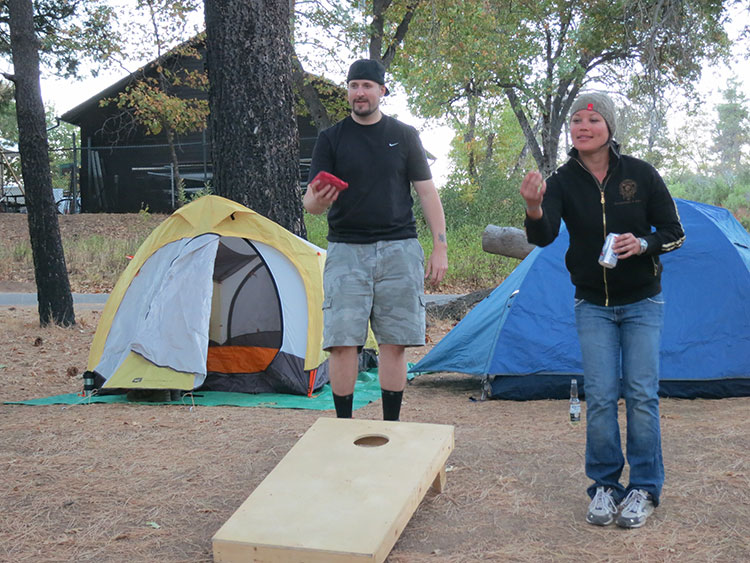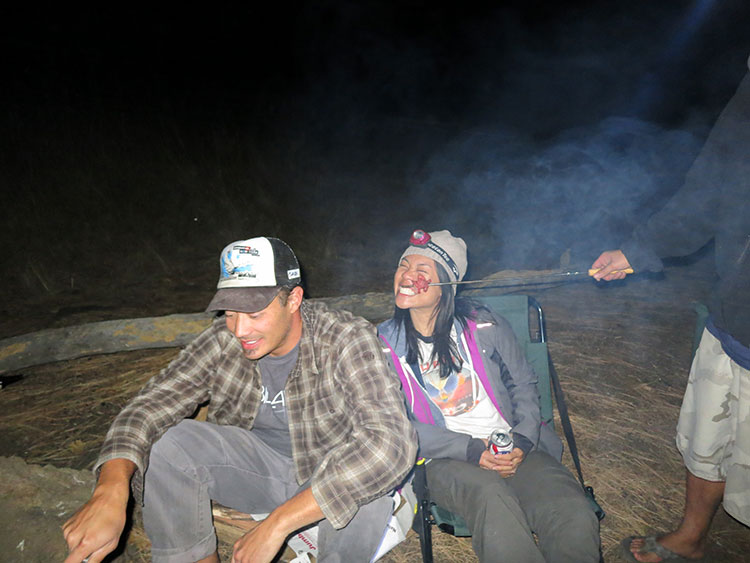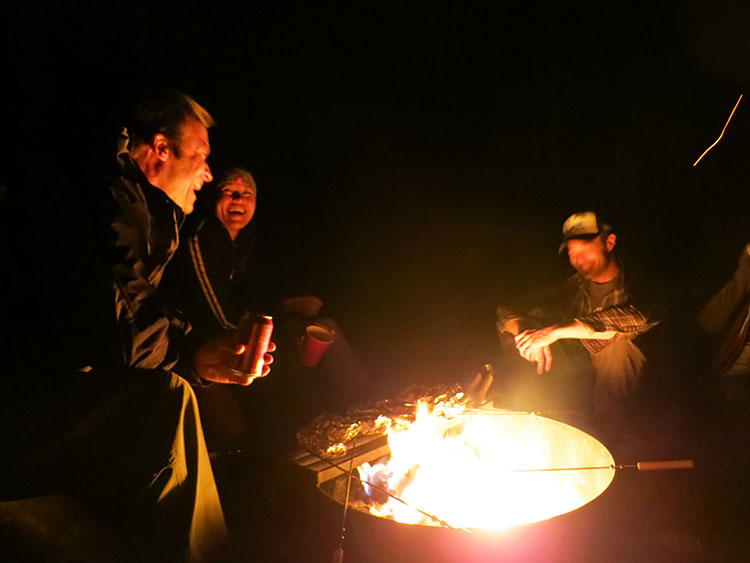I don’t really blame Steve for giving up climbing. It might have been the busted ankle at Santee Boulders (I neglected to move the crash pad as he traversed a tricky problem). Or maybe it was the ADT (American Death Triangle) that I rigged on our first top-rope excursion. Maybe it was because we sucked. Whatever the reason, he lost interest and eventually, so did I. It’s hard to climb when you don’t have a partner.
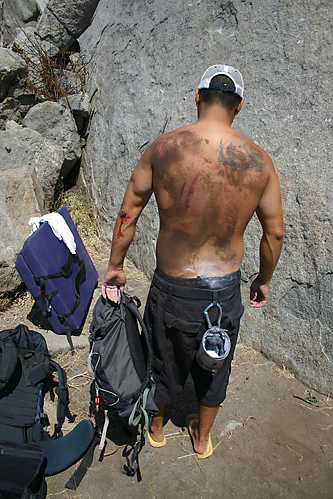
Well, I got back into it after meeting Justin, an experienced trad climber who was willing to mentor me through hands-on instruction; really, the best way to learn. Back in the day, we were pretty clueless and it is fortunate that no one got hurt.
After no small amount of prodding, Steve decided to give it another shot. We hit the gym a few times and he eventually agreed to join me outside. We climbed a couple of the classics at Mission Gorge and then he put together this trip to Cuyamaca for a weekend of fun top-roping on Stonewall Peak.
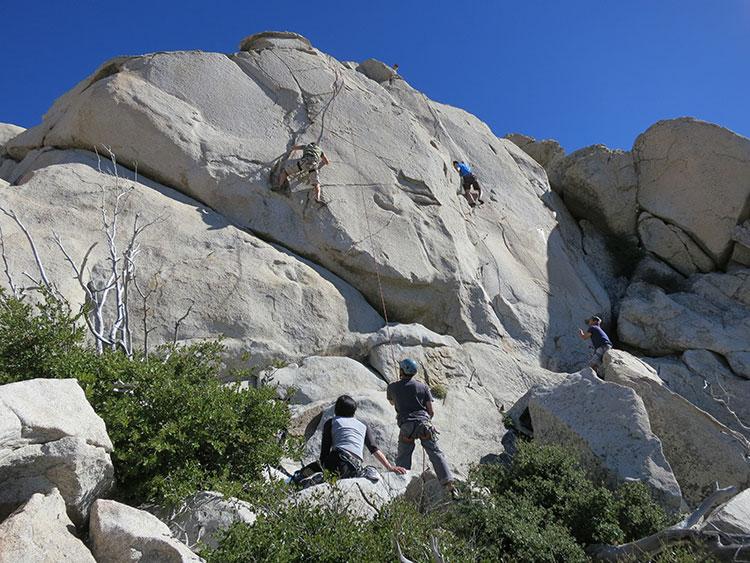
This was my first time to Stonewall, and with such a big group of people, I wanted to find a couple of fun routes that would be close together. We dumped our camping supplies at Paso Picacho and then hiked up to the summit; just enough to get the blood flowing. I was bummed when we got to the top, because a guy was teaching a group of kids how to rappel near the area I planned to set up our top-ropes. But they were just about finished, and everyone was friendly enough.
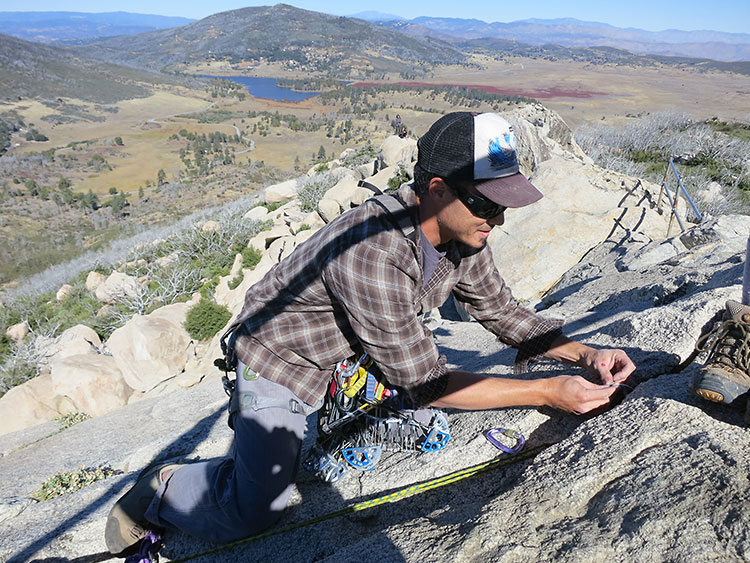
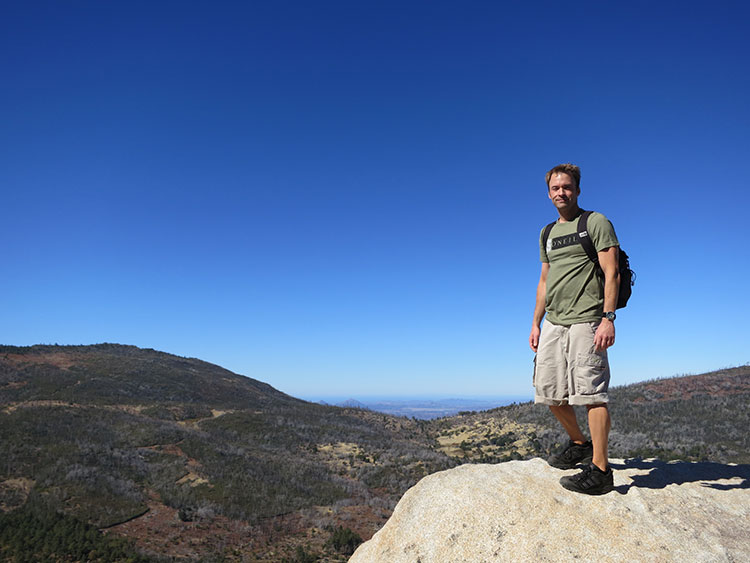
I had read that one should avoid using the summit railing for an anchor, but these “sport rappellers” were doing just that. The thick steel railing was set in concrete and I didn’t see any obvious reason not to incorporate it into our anchors. It’s possible that people have top-roped directly off the railing itself, which would result in wear and tear on the bars, but I wasn’t planning on doing that. I built a 3-piece anchor using a couple of nuts and a cam and then backed that up to one of the anchor posts. Eileen had never rappelled before, so I figured this would be a good opportunity to show her the basics. I hate rappelling and try to avoid it when possible, but this seemed like a relatively safe and controlled environment to learn. I rigged everyone up with a cowtail, plugged them on the lines, and then rapped down first to offer a fireman’s belay. Once the kids were finished, I set up a second rope for the route next door.
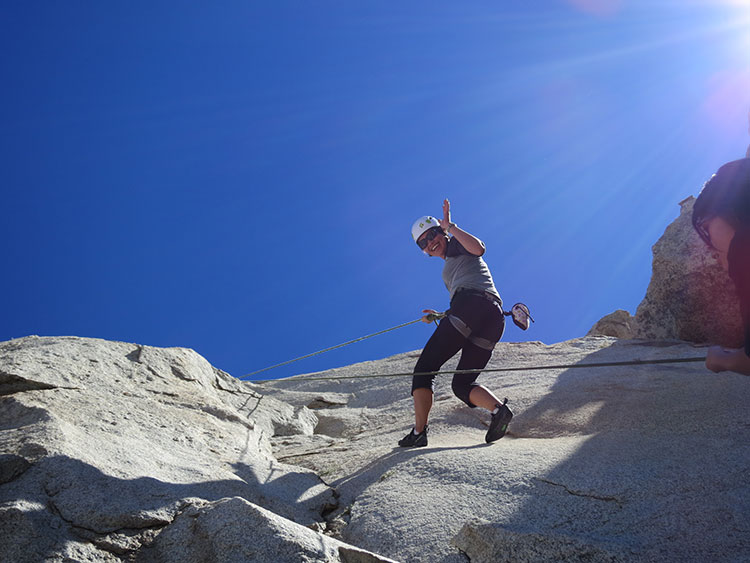
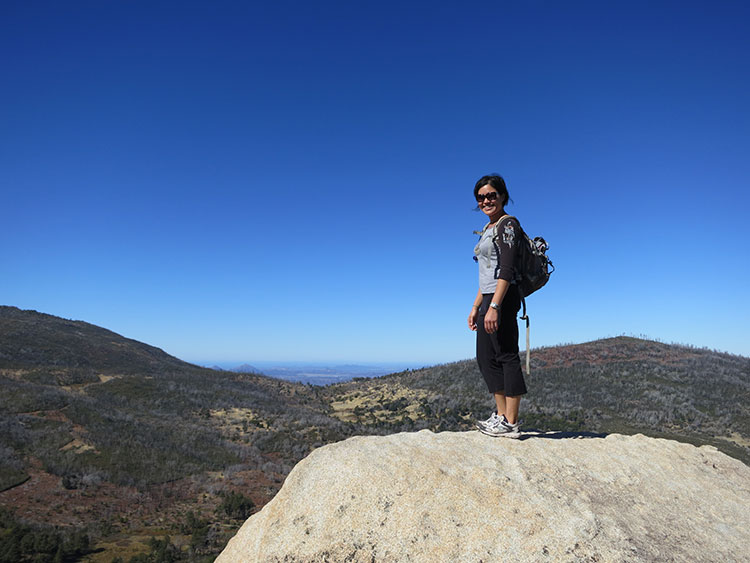
We climbed the two “railing routes” as they are called, a 5.6 and a 5.9. I believe these were used by the Sierra Club many decades ago, and indeed the ratings seemed stiff to me. I guess that shouldn’t come as a surprise, since 5.9 was near the upper end of the hardest climbs, back in the day. Everyone had a good time on the easier route, which involved some fun moves for the grade, and then they made progressively better attempts at the harder climb. The crux moves, down low, felt more like 5.10b; I have a feeling that a critical hold might have broken off sometime in the last, oh, 30 years.
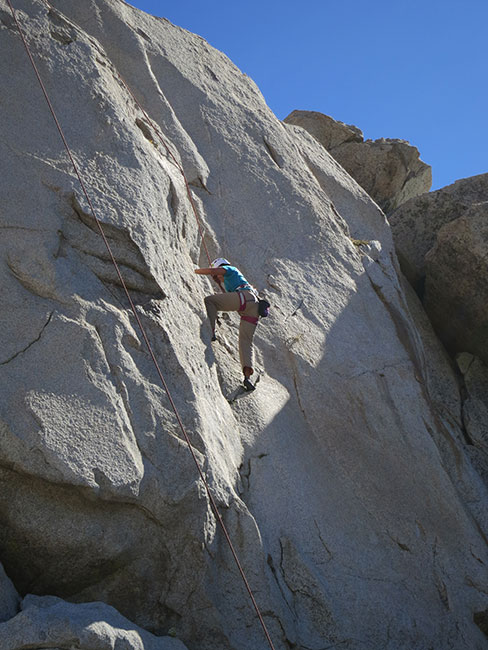
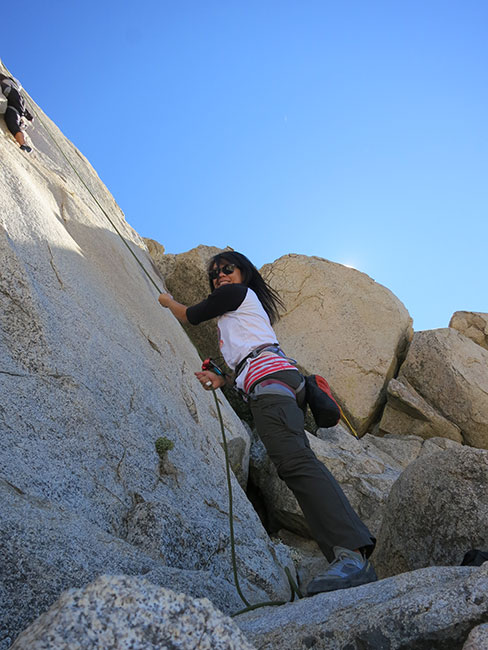
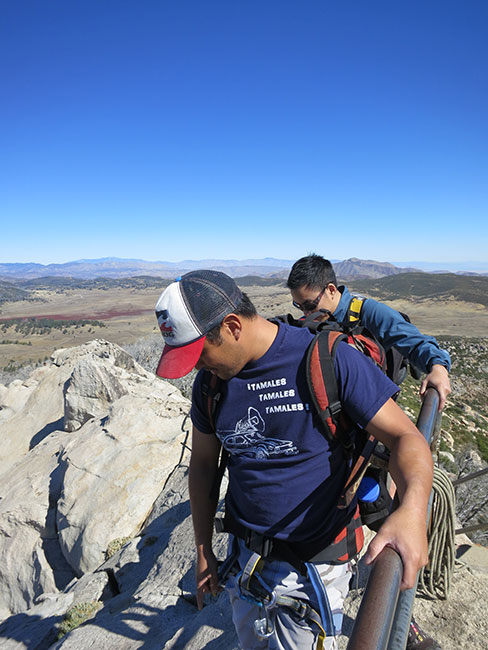
After climbing, we hoofed it back to camp and spent the rest of the evening playing cornhole, drinking, and sharing stories.
